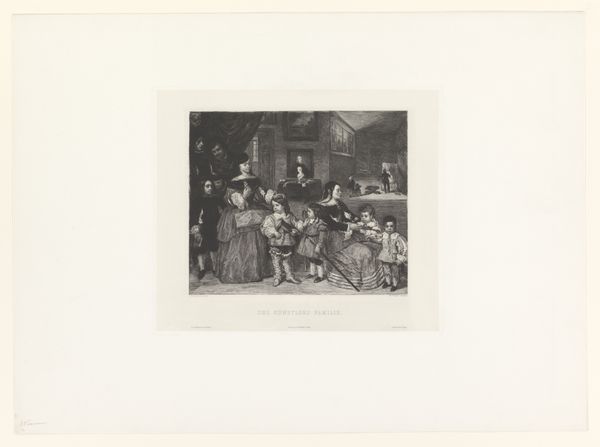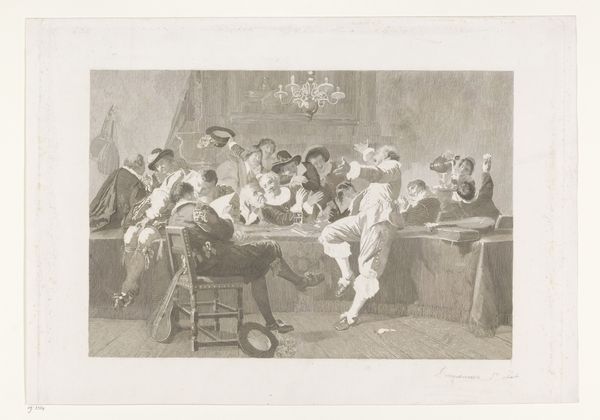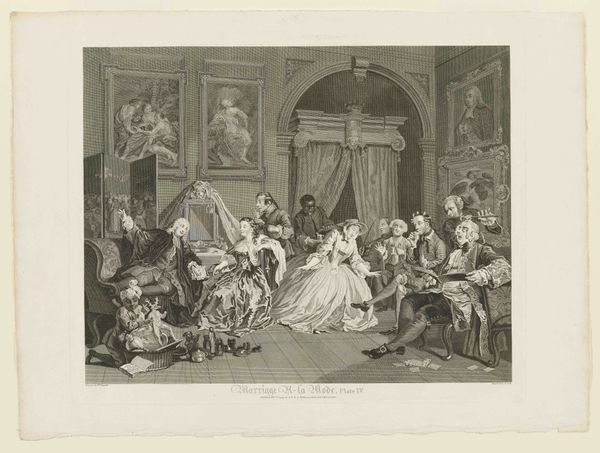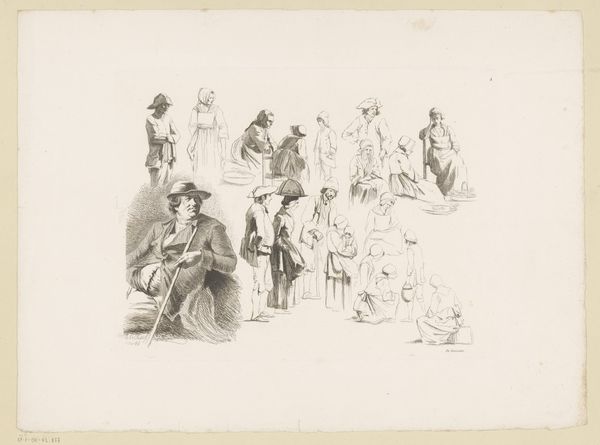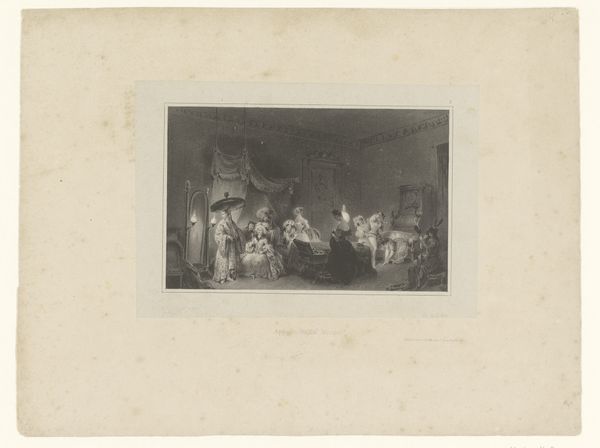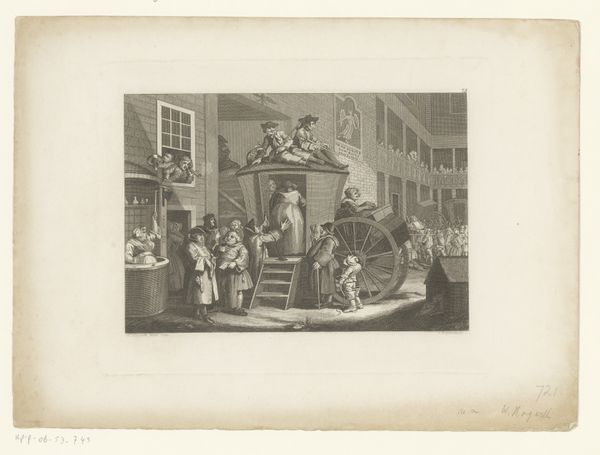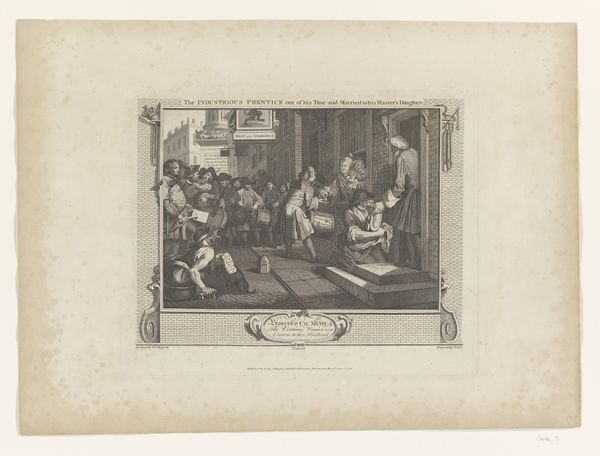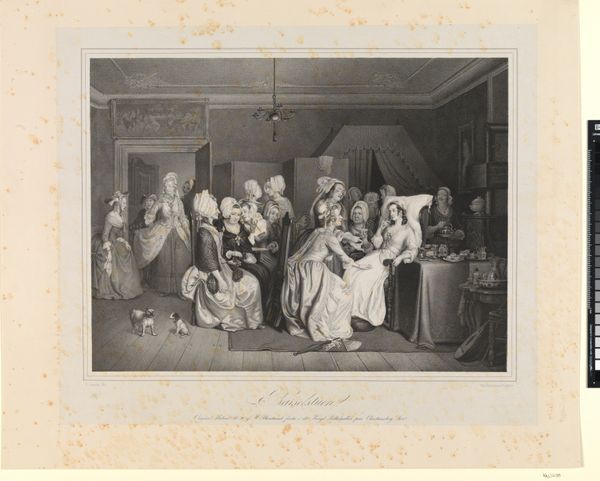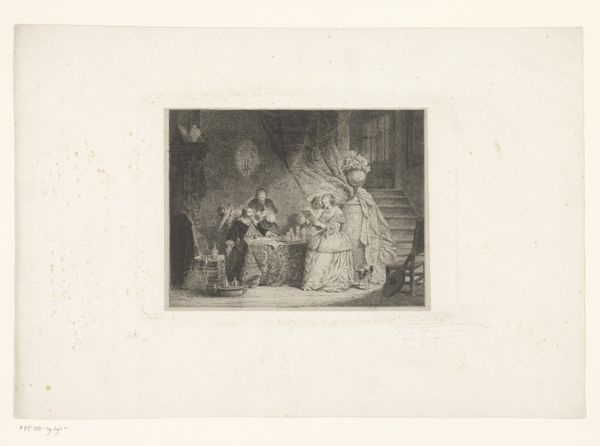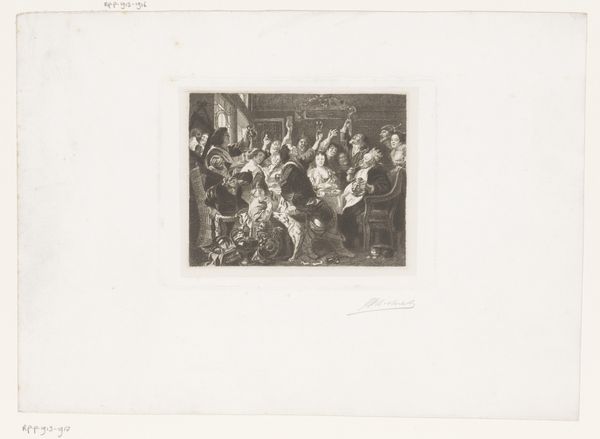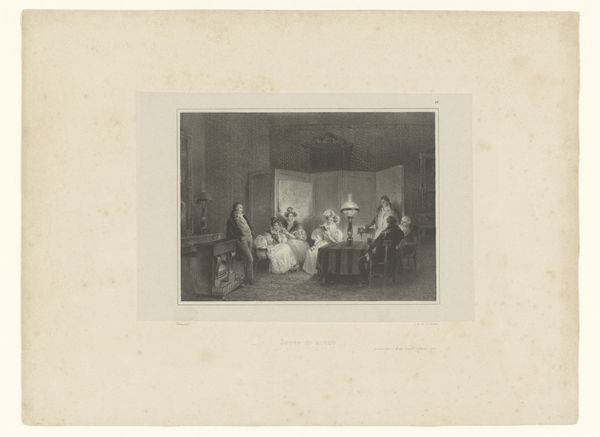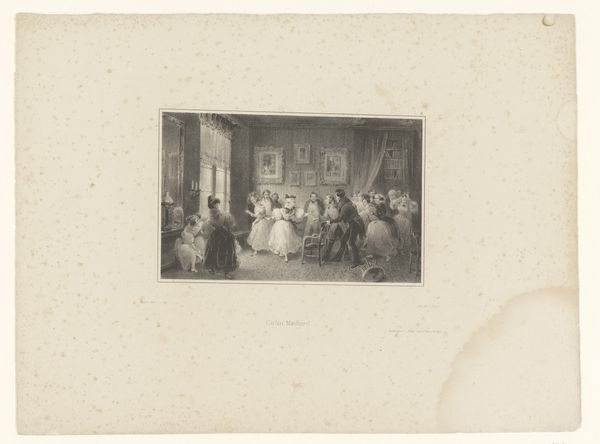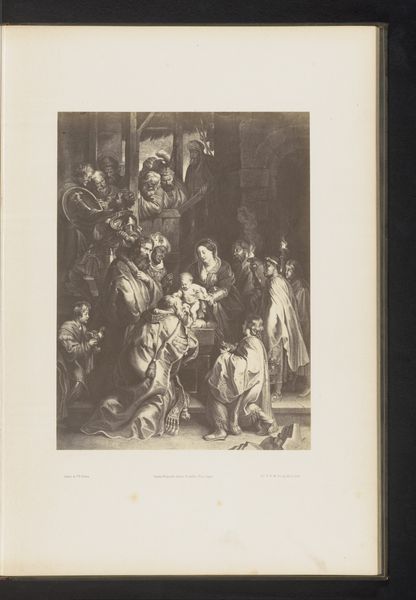
De schuttersmaaltijd in de Voetboog- of St. Jorisdoelen te Amsterdam ter viering van het sluiten van de vrede van Munster, 18 juni 1648 Possibly 1848
0:00
0:00
drawing, print, engraving
#
portrait
#
drawing
#
dutch-golden-age
# print
#
historical photography
#
group-portraits
#
genre-painting
#
history-painting
#
engraving
Dimensions: height 528 mm, width 865 mm
Copyright: Rijks Museum: Open Domain
Curator: Look at this print by Johann Wilhelm Kaiser I. It’s called “De schuttersmaaltijd in de Voetboog- of St. Jorisdoelen te Amsterdam ter viering van het sluiten van de vrede van Munster, 18 juni 1648,” or “The civic guard’s meal in the Voetboog or St. Jorisdoelen in Amsterdam in celebration of the closing of the Peace of Munster, 18 June 1648,” and it’s thought to have been made around 1848. Editor: Wow, it’s incredibly detailed, considering it’s a print! The gathering has a boisterous feel, wouldn't you agree? There are so many faces crammed into the frame. Like trying to eavesdrop at a rowdy party. I wonder what the joke is... or if there is any joke at all. Curator: It's an engraving, a print, of a Dutch Golden Age scene depicting this historical event and its importance. The Peace of Munster marked the end of the Eighty Years' War, signifying the Dutch Republic’s recognition as an independent state, which is crucial for understanding Dutch national identity and its self-determination. Editor: You’re right, knowing the subject matter changes everything. There is a sense of ceremony. Look at the way everyone is turned towards the center. It feels almost staged in the composition, if it wasn’t for those two children playing by the drum on the left. But what I’m truly admiring is how Kaiser managed to get so much emotion out of the black and white medium. Curator: That's precisely what makes it fascinating. These civic guard portraits reflect broader shifts in power, wealth, and social mobility within the Dutch Republic. Note how the men at the tables, their clothes and accessories indicate both their societal status and active participation in maintaining order, embodying a burgeoning merchant class and an increasingly sophisticated civil society. The very act of commissioning and creating works like this reinforces these narratives of citizenship, duty, and prosperity. Editor: You put it so eloquently, truly. This deep dive has completely reframed how I initially perceived it. From spontaneous revelry to, really, a pivotal historical record. Curator: And these gatherings were about civic responsibility and performative citizenship and remind us that collective identity is never fixed but evolves through historical and social currents. Editor: Thinking about what the artist intended the audience to feel… or perhaps just see... puts this into a new context altogether. Thanks for showing me more, in this detailed and energetic gathering. Curator: It’s been insightful, examining the historical resonance and the print's narrative within a broader framework of cultural production and social representation.
Comments
No comments
Be the first to comment and join the conversation on the ultimate creative platform.

